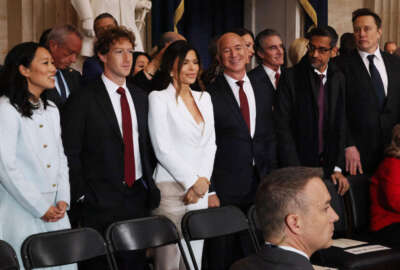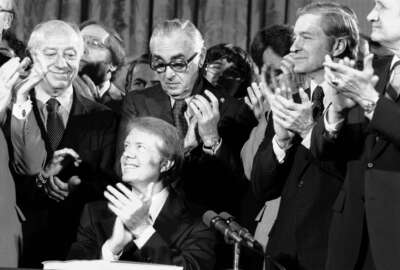Sammies finalists show what’s possible
These career federal employees are about much more than good administration alone.
Every year, I look forward to interviewing the best among government employees. Namely, the finalists for the Service to America Medals. The activity is the same every year, but the stories are so varied and interesting, it never gets dull.
Annuals in my business can get tedious. Long ago I worked for a magazine serving the manufacturing sector. Every year we’d do an issue devoted to value analysis. It was called the VA issue. The section editor in charge once rolled his eyes, and asked the ceiling, “Let’s do a Nova issue! No VA.”
Not the Sammies interviews. I look forward to them every year. No two stories are identical and they’re always engaging.
The scope and cost of government has always been a matter of debate in the United States. But everyone agrees the government we have should be a good one. At this week’s breakfast, in the Hart Senate Office Building, to introduce this year’s finalists, Commerce Secretary Wilbur Ross commented, “A successful nation needs a successful government.” You don’t have to look far to see examples of that assertion and its opposite. Venezuela comes to mind. Veterans Affairs Secretary Bob Wilkie said, quoting Alexander Hamilton, “Good government is all about good administration.”
The 26 Sammies finalists — you can peruse the list of them here — are in many cases top notch administrators. They’re also top notch scientists, physicians, technologists, diplomats, lawyers, and law enforcers.
The tall windows of the Hart’s 9th floor function room showed a vista with many cranes. Washington, D.C. is a city under recent years in seemingly perpetual construction. While the Partnership for Public Service’s Max Stier read each finalist’s accomplishments, one of the distant cranes picked up a piece of girder and swung it around. It occurred to me that the operator of that crane could exemplify what good government is all about.
I imagined the crane operator. His or her work is subject to Occupational Safety and Health Administration rules. If he’s in a union it may be an object of activity by the National Labor Relations Board — or the Justice Department. Perhaps she’s a veteran with health problems VA can help with. The crane might be located on a federally-funded project.
Year after year, the Sammies finalists are people who work in the real world. They might use abstract tools like supercomputer algorithms, metallurgy, or chemical reactions or electronic imaging, but they apply them in pursuit of real problems. That’s innovation.
Sometimes they simply use original thinking. Wilkie made mention of his father, a Vietnam veteran whose ailments produce chronic pain. Wilkie said that his dad never imagined he would find relief with Tai Chi and yoga. Yet today’s VA, he said, is using those very techniques for pain management.
Even the mightiest institutions can collapse from the internal rot of corruption. Thus a test of institutional strength is whether an institution can self-correct. This year’s Sammies include a multi-agency law enforcement team that investigated and prosecuted the Navy’s so-called Fat Leonard bribery scheme, one of the most spectacular scandals in Navy history. Captains and admirals as well as contracting officials have been convicted.
Anyhow, I’ll be looking forward to interviewing the Sammies finalists on my Federal Drive. Be sure to listen. I’ll reinforce your confidence in what the government is capable of.
Copyright © 2025 Federal News Network. All rights reserved. This website is not intended for users located within the European Economic Area.
Tom Temin is host of the Federal Drive and has been providing insight on federal technology and management issues for more than 30 years.
Follow @tteminWFED







